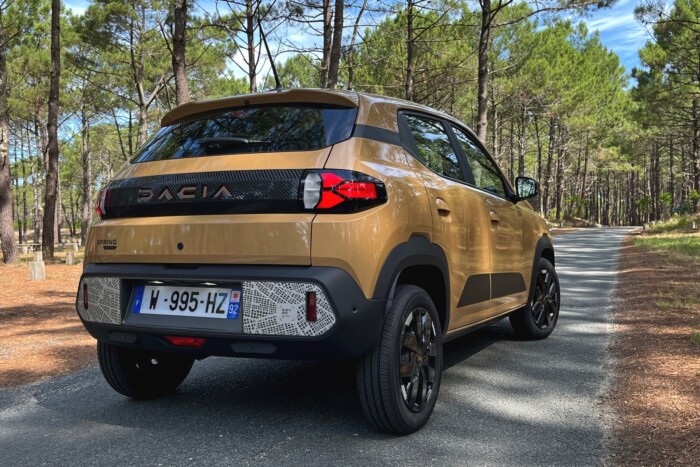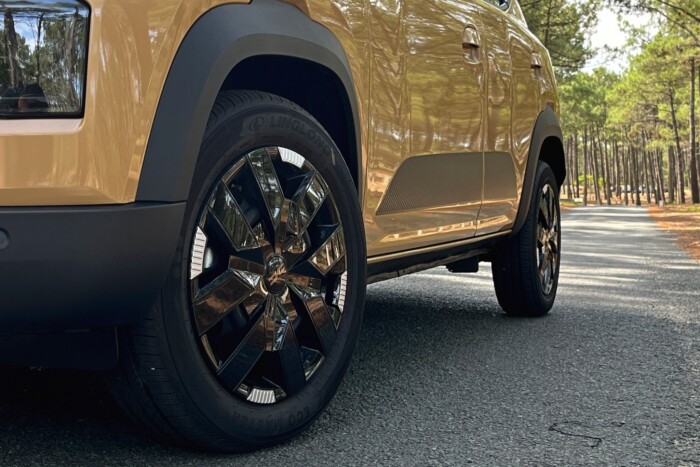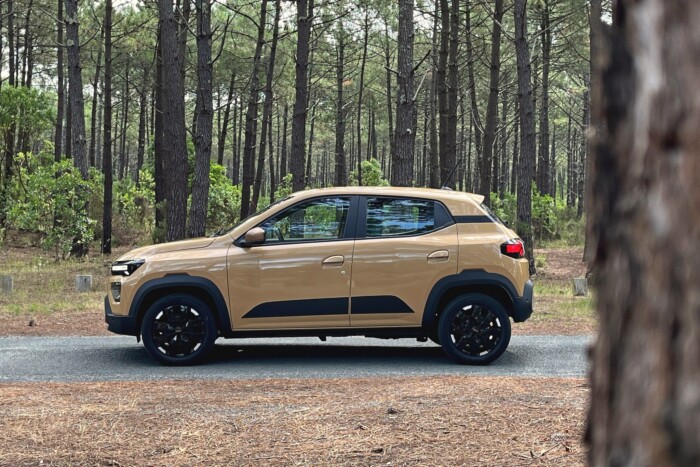Today, it is a rare and strange feeling to receive a conventional key with a pen, that is, a key that cannot be closed to the car, although the most common nowadays are keys with a radio signal, without a pen and a push-button switch. Start button. Well, in the spring, I insert a conventional key into the conventional ignition switch, where it should be turned on. Obviously, there is no engine sound, but the displays come to life. I pull the door towards myself, and the small four-wheeled box responds with a familiar tinkling, but in the end, this is acceptable in a cheap car, as I remember, the Toyota Aygo X is worse.
The small gear shifter takes direction irrationally, although the click and coordination are not bad, it only manages to understand what I want half the time. So I went forward several times when I wanted to go back and reverse, you have to pay attention to what is shown on the digital display of the instrument panel before getting off the pedals.

Its range is 225 km.
When you release the brakes, the spring starts to creep weakly, which is important for its maneuverability to be intact. It skillfully returns to release the throttle and brakes the momentum noticeably more strongly in B, so the development was useful. The 65 hp versions were only put into service at the presentation, which I was not surprised by, as this also has decent performance already in 2024, but it has already reached the usable level.
I don't lag behind the rhythm of traffic in downtown Bordeaux, but I don't hold anyone back on the highway to the ocean either. In fact, I've raced it and it didn't take me long, but I wouldn't recommend it to everyone. It reaches 100 km/h in 13.7 seconds, which sounds like a lot, but in reality it's enough and on paper its top speed is 125 km/h, although its watch reads over 130. If my memory serves me right, the previous version was noticeably more unstable above 100 than the new one. Even when approaching the top speed, the springs moved straight and the steering wheel didn't shake either, and the larger rims and chassis tuning helped noticeably.

Larger rims are 15″ with decorative discs.
According to the factory values, its consumption is 13.5 kWh/100 km, and the average during the test drive was between 12-13. With this, it is not impossible to reach the range promised by the manufacturer of 225 km, and it seems quite realistic during operation in the city. A particularly good point of the updated model is that the interior, upholstery elements and dashboard feel quite solid. Although we did not find a road as bad as the average Hungarian roads, we did present it with a few potholes and it did not make a bad sound anywhere.
Particularly interesting is how well the Spring's chassis holds up, it seems to slide over some potholes, and I didn't feel it through either the seat or the steering wheel. That's the good thing about being light, the Spring weighs 1035kg when empty according to EU standards, so with a 75kg driver it should be 1.1 tonnes with two people, this is Suzuki Swift and Mazda MX-5 level, a car of this size will not have more than the permissible pressure on it.

Its length on wheels is 3.7 metres.






